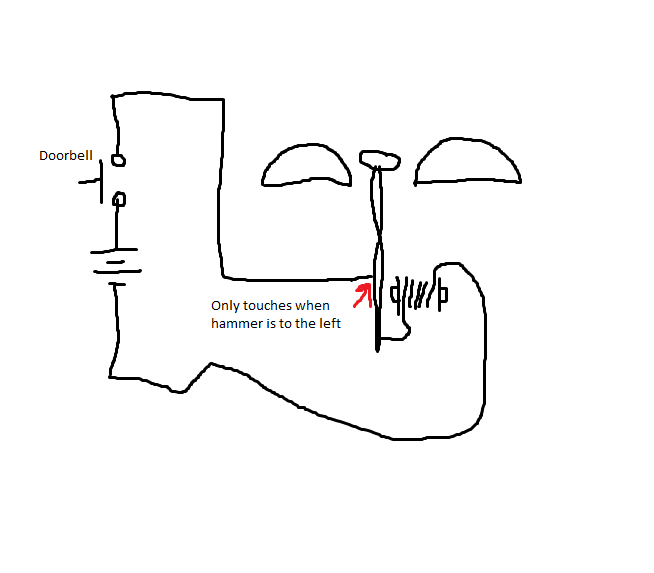Yep. Starhawk's got another goofy project in his head.
This time I'd like to make a doorbell. I've got an old telephone bell (from a rotary phone, specifically an ITT clone of the Western Bell Model 500). I'd like the mailman (or whomever happens to wander by) to be able to push a button and BRRRRRRRRINNGG!!! It's time to answer the door!
Trouble is, those old bell coils were used to ~90vAC at about 20Hz -- not something easily obtained from a few AA cells. LOL.
I have a bunch of odds and ends and bits of things that I could throw into this. I know I've got at least one 10uF capacitor. I've got a couple resistors of different values (don't recall what the values /are/ tho, at least offhand) and things like that. If I had to I could take some wire and an old screwdriver and make a transformer although it sure as hell won't be UL listed!
although it sure as hell won't be UL listed!
If I absolutely have to buy parts, I can get whatever's in stock at the local Radio Shack on Monday -- but I don't want to spend more than $15 at the absolute most.
I'd like to use a quartet of C cells as the power source. I've got at least 16 (and I think closer to twice that!) of the damn things, all disposable... all a little older but they should still be good. They've never ever been used. (Yes I know about self discharge. They're not from 1985, Doc! )
)
Can this even be done? If so: guide me!
This time I'd like to make a doorbell. I've got an old telephone bell (from a rotary phone, specifically an ITT clone of the Western Bell Model 500). I'd like the mailman (or whomever happens to wander by) to be able to push a button and BRRRRRRRRINNGG!!! It's time to answer the door!
Trouble is, those old bell coils were used to ~90vAC at about 20Hz -- not something easily obtained from a few AA cells. LOL.
I have a bunch of odds and ends and bits of things that I could throw into this. I know I've got at least one 10uF capacitor. I've got a couple resistors of different values (don't recall what the values /are/ tho, at least offhand) and things like that. If I had to I could take some wire and an old screwdriver and make a transformer
If I absolutely have to buy parts, I can get whatever's in stock at the local Radio Shack on Monday -- but I don't want to spend more than $15 at the absolute most.
I'd like to use a quartet of C cells as the power source. I've got at least 16 (and I think closer to twice that!) of the damn things, all disposable... all a little older but they should still be good. They've never ever been used. (Yes I know about self discharge. They're not from 1985, Doc!
Can this even be done? If so: guide me!
![[H]ard|Forum](/styles/hardforum/xenforo/logo_dark.png)
